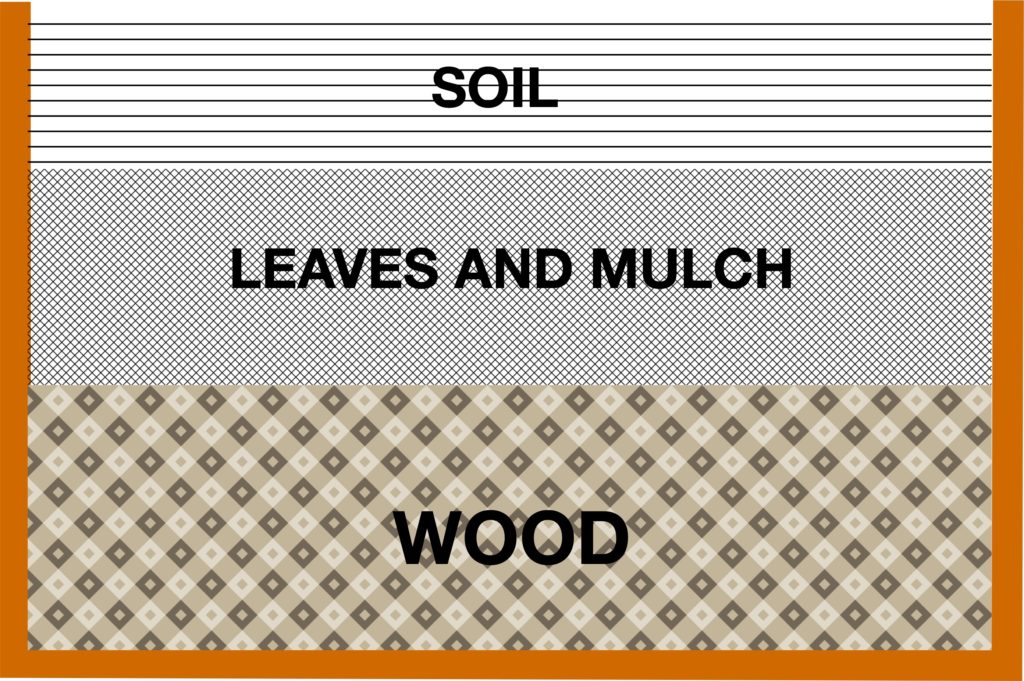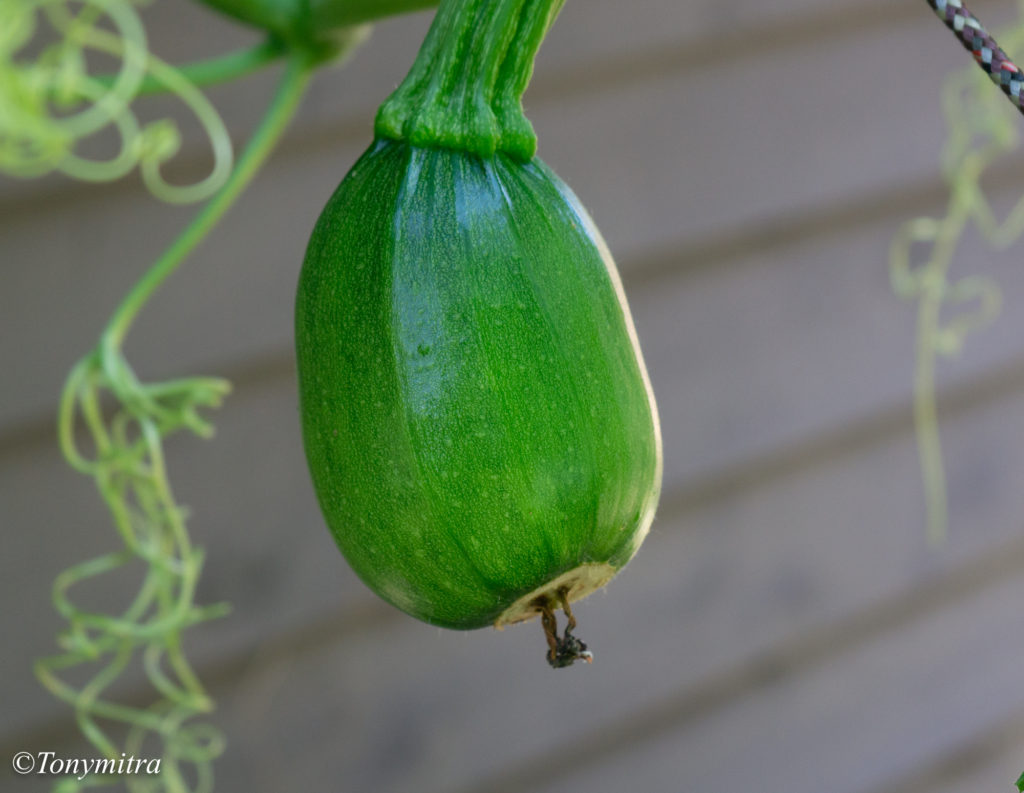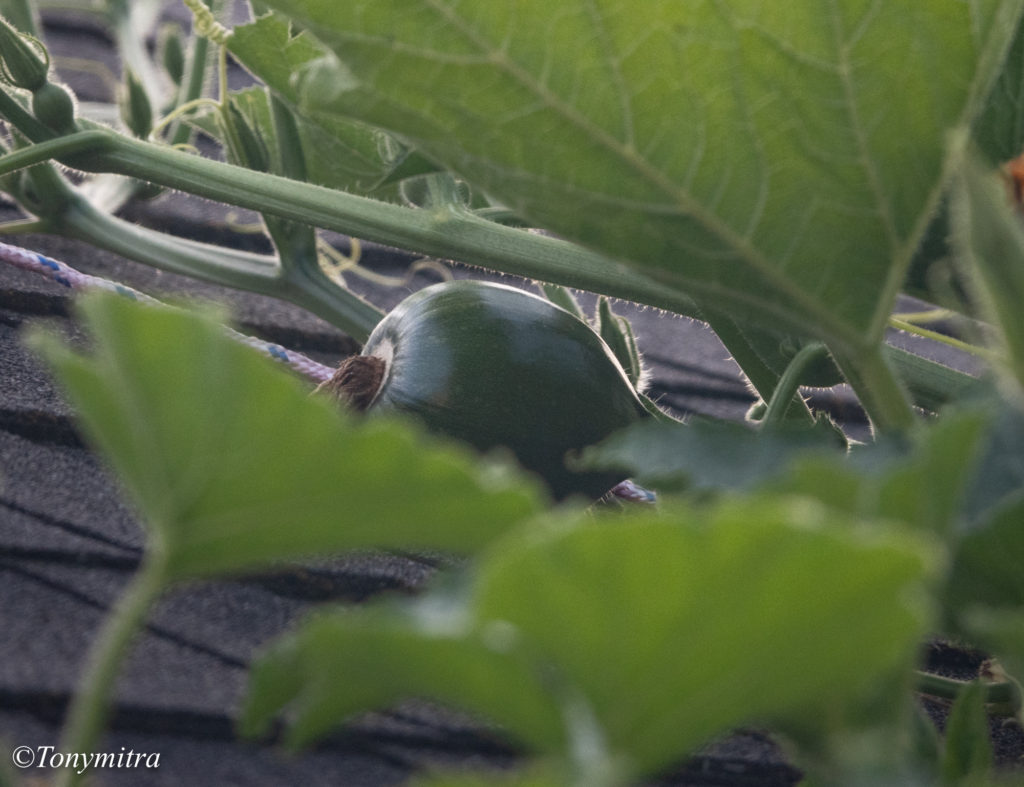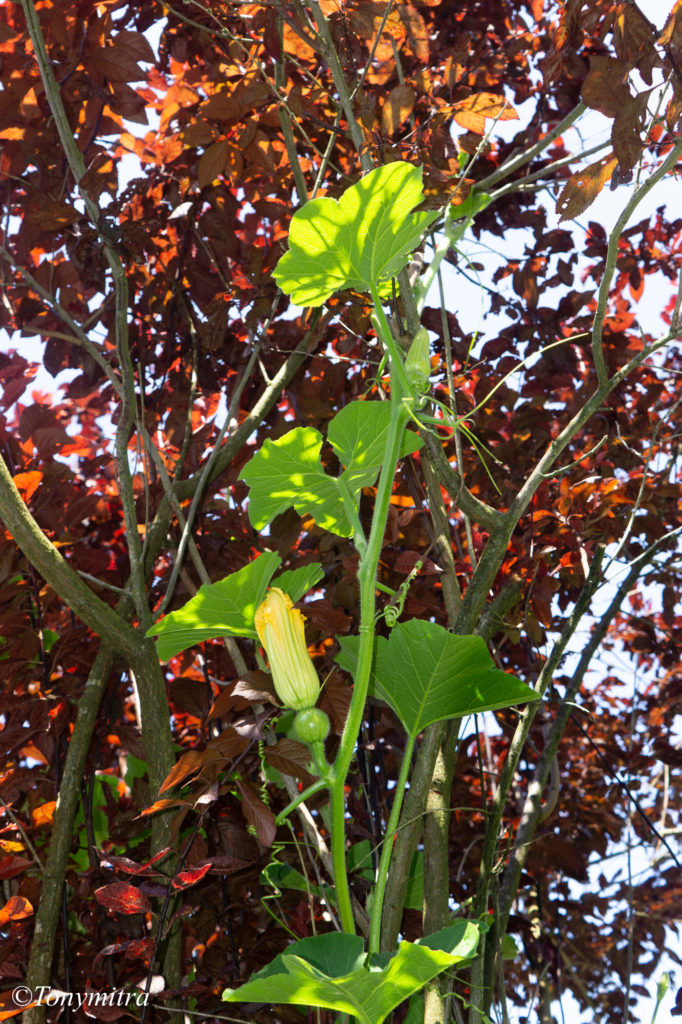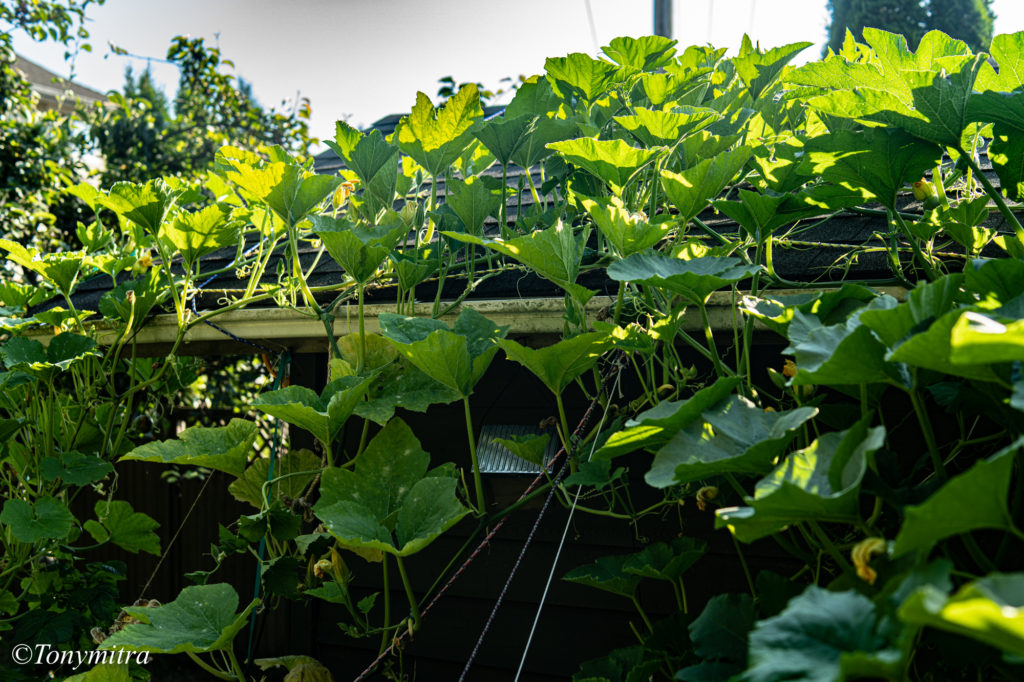
This year I seem to have a huge success in growing the general Cucubrita family of food crops. Although the season is in its early phase and the produce are not yet ripe, it appears that I shall probably have a successful harvest of pumpkins, squash, zucchini, gourd and cucumbers than any previous year.
I planted a lot of seeds in my starter pots. Most of them sprouted and were successfully transplanted outdoors. I had been careful to manually water the plants, both in raised beds and on portable fabric bags. The main difference in the raised beds were that the lower levels were fulled with wood, leaves and grass mulch, with the upper layer being soil – following the hugelkultur technique. Actually, I did not know of hugelcutur when I started doing it out of my own belief that this might work. And then, based on my pictures posted on social media, I got responses that showed that my efforts were already practiced long before and had a name – originating from Germany.
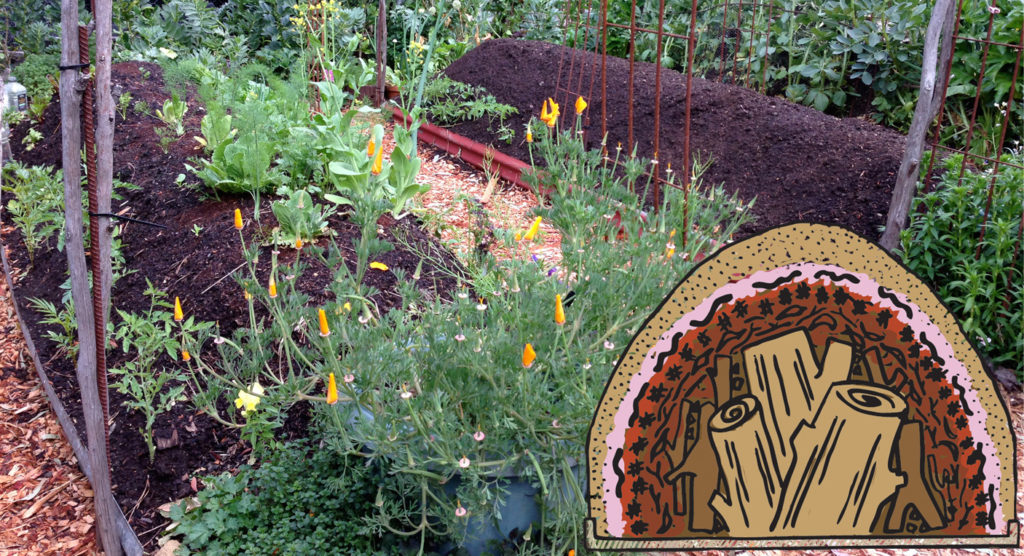
In more than one way, the Cucubrita family has contributed to my backyard turning into a food forest. The other major contributors are potato, tomato and the cabbage and cauliflower groups.
I am aware that the Cucubrita family of squash, gourd, zucchini and especially pumpkin are rich in vitamins, primarily vitamin-A. Also, the greens of these plants are great as food, either sautéed western style or cooked like saag Indian style.
I have not had any of these greens yet, but that is to come. As soon as a large pumpkin or two begin to grow on a vine, one can in effect cut off the remaining vine and leaves and cook them, while letting the pumpkins grow and the plant put more energy into them instead of into growing more vine.
I did not count how many plants I have put in the soil in my backyard, but there are perhaps a hundred vines, some are branches of the main, growing in all directions and are literally taking over the neighbourhood.
I can already count at least 8 pumpkin growing on the very roof of my garden shed, along with half as many squash. But these are merely preliminary figures. The vines are growing on the roof like crazy, and many more are claiming to the roof. Some are producing fruits hanging off the edge of the roof. So no telling how many will be linked to this one small garden shed roof alone. It is perhaps not an exaggerated expectation to state that I expect the total number of pumpkin, gourd and squash on my property this year might cross 50. In other words, if I was to eat one of them each week, it will cover the whole year.
At least half a dozen of the vines are happy to be climbing the red leaf cherry blossom tree nearby one of the hugelcultur raised beds.
As to the vines, there are perhaps a hundred of them growing everywhere. And this does not even include the cucumbers, which by themselves might produce almost 50 fruits.
I am kept busy daily, trying to help the vines find something to climb. I have criss cross the area is ropes and strings for these vines to climb, wrap around, or hand from.

About the pumpkins and squash, there is also a story to be told involving the front yard.
I had prepared part of the smaller front yard, removing the grass, covering the area with biodegradable cardboard to suppress the weeds, and brought some soil from my backyard, mixed with compost and placed it over the cardboards last year, to try to grow some food instead of just a toxic grass lawn that supports nothing. I wanted it to either go to weed which supports insects, bee, rabbits, birds and other wildlife, or grow food. For purpose of appearance, I chose to grow food. I had planted some beets last year.
This year, I added some wooden frames there to demarcate food zones for different crops and flowers there, and planted some Swiss chard and beets in one of the rectangles, and a dozen sunflowers on another. A large section was left for planting more food. I was thinking of putting some more turnips and perhaps carrots there.
However, a strange thing happened when I started watering the beets, Swiss chards and the sunflowers. The water droplets also fell a bit on the sup pounding area that had the good soil but where I had not yet put any seeds. Apparently, the soil transported from my backyard, from beds where I had grown stuff in previous years, carried some tiny potatoes the size of half a marble or so that often escapes attention, but are still viable, despite their small size. Also, somehow the soil contained a few pumpkin and swash seeds, no idea how.
So, in my front yard, suddenly some potato, squash and pumpkins sprouted, next to the planted beets and chard.
I was surprised, but did not uproot them. If they could be hardy enough to emerge in my front yard unplanned by me, they deserved to live, I thought.
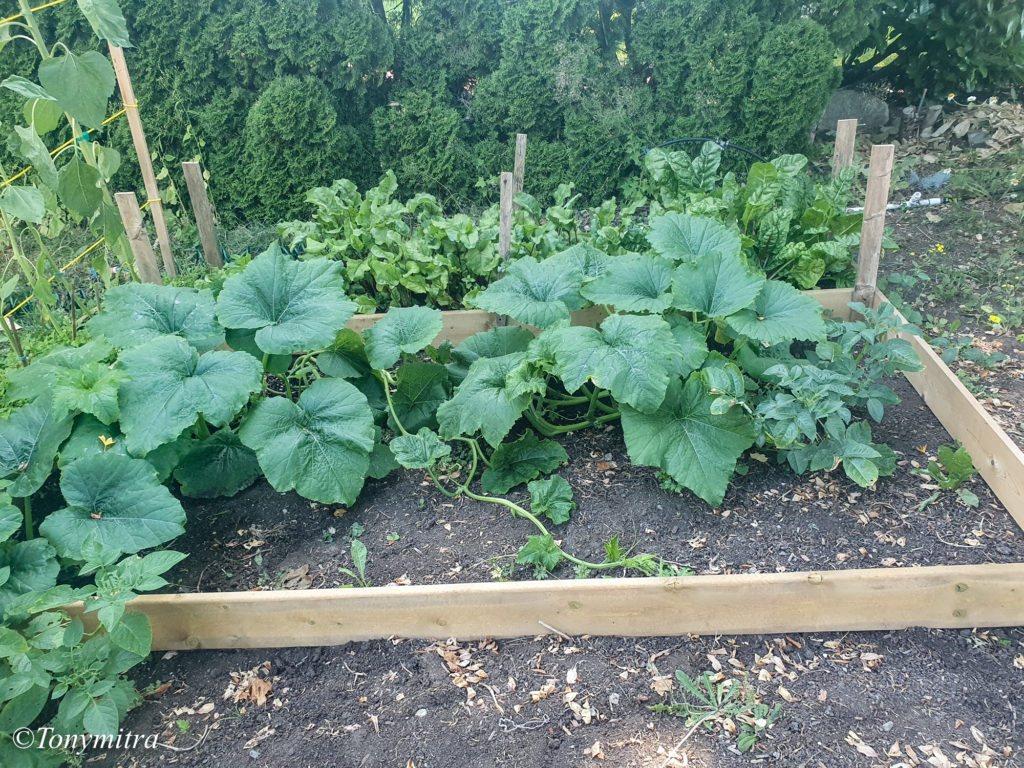
And now they have taken over the vacant wood framed plot. One of the vines have grown on the soil and looking for something to climb. I am thinking of making them a ramp and scaffolding of wood. But I have to first do some wood work to provide support for the second tomato zone where the plants are outgrowing the bamboo support sticks.
Meanwhile, I am thrilled to watch my Cucubrita grow. This might just be the year of the Cucubrita, for me.

